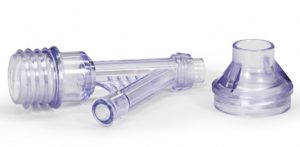Modern manufacturing processes must be agile and resilient. The marketplace is highly competitive and only growing in intensity across our global economy. Traditional and linear waterfall approaches to structuring projects are no longer the only option.
Today, companies can engage in more advanced concurrent engineering workflows that can reduce time to market, improve outcomes, and more.
At Reliant Plastics, our team is ready and equipped to engage with customers interested in a concurrently engineered project. Explore what that means in practice and see how this methodology could benefit your next project.
What is Concurrent Engineering?
Concurrent engineering definitions differ. Some see it as making a single project data repository available to all the teams involved. Others see it as a highly integrated development process with a shared and consensus-based decision-making process. The goal is to ensure that each design decision incorporates perspectives from everyone involved.
In short, concurrent engineering requires visualizing and exploring the entire life cycle of the product, not just one stage at a time. Teams work in parallel so that one group of professionals isn’t left waiting on another group to finish their tasks. Instead, everyone contributes on an ongoing and active level while staying abreast of what’s happening elsewhere on the project. Concurrently engineered projects require fewer unnecessary or repeated steps, need fewer redesigns, and generate faster results.
The Advantages of Concurrent Engineering and Collaboration
When properly implemented, concurrent engineering can deliver high-impact benefits that influence the outcome of the entire project. Organizations today invest in and embrace these strategies not only because of the agility they offer but also because it opens doors to new product ideas and innovations. When everyone participates from the initial ideation stages to manufacturing and deployment, the outcome can be much greater than the sum of its parts.
Other advantages to this type of engineering collaboration include:
- Cross-departmental collaboration. Everyone brings different skills and perspectives to the table while creating plastic parts. Why keep those perspectives limited to just one area? Concurrent engineering ensures that everyone communicates and shares ideas.
- Cost savings across the entire product life cycle. Isolated design changes that occur in a vacuum can cause expensive re-engineering needs. Issues can develop at different stages that could have been prevented earlier. This approach ensures you save money by identifying and addressing problems early in the process.
- Faster times to market. Keep and hone your competitive edge by accelerating projects. Instead of having teams who must wait for someone else’s work, parallel collaboration yields better outcomes at a faster pace.
Are There Drawbacks to This Process?
While concurrent engineering can yield many improvements for companies, some pitfalls exist. Proper implementation, tools, and communication are essential. Without these elements, you can experience some challenges. An experienced partner, like Reliant Plastics, can help you mitigate potential risks such as:
- A high degree of process complexity. Coordinating multiple teams simultaneously can drive improved outcomes, but losing control of the project management aspect is possible. You’ll need to be ready to manage these efforts appropriately.
- Challenges facilitating communication and collaboration between teams. You can’t engineer concurrently if the left hand doesn’t know what the right hand is doing. See to it that everyone is on a level playing field.
- Early errors can create cascading problems. A high degree of accuracy and confidence is vital, especially at the foundational stages of the project. Otherwise, people may work with mistaken assumptions.
This methodology yields excellent results but requires care and attention to detail.
Partner With Experts in Modern Design Processes and Solutions
With complete visibility into a project’s entire life cycle and streamlined data sharing between teams, you can strive for better and more profitable outcomes. Concurrent engineering for plastic component manufacturing delivers the potential for substantial cost savings. At the same time, you can enhance product quality and reliability when all the key stakeholders have similar buy-in to the project.
With Reliant Plastics, you can access advanced engineering services that include the concurrent methodology. Our wealth of experience in project management and collaboration enables us to support your team in materials selection, weight reduction, packaging design and other components of the production process. Connect with us today to explore additional details about concurrent engineering, design for manufacturing (DFM) principles and more.




